- 1. Create a plan
- 2. Divvy up the work
- 3. Track KPIs and monitor project performance
- 4. Improve workflows
- The Critical Path Method (CPM)
- Earned Value Management
Summarize this article with AI ClickUp Brain not only saves you precious time by instantly summarizing articles, it also leverages AI to connect your tasks, docs, people, and more, streamlining your workflow like never before. Summarize article
Summarize this article for me pleaseWhat is Project Monitoring and Controlling in Project Management?
- Project initiation: Define the project scope, project milestones, stakeholders, and deliverables
- Project planning: Create a roadmap to meet the project goals, including drafting a project plan, outlining the project schedule, and identifying project risks
- Project execution: Start the project by bringing team members on board, assigning tasks, and managing communications
- Project monitoringand controlling: Capture data from the project, analyze results, and act quickly to address any challenges
- Closing the project: Wrap up the project by meeting one final time to review metrics, what went well, and what you’d change going forward
Project monitoring is all about gathering and evaluating data from the project from start to finish. This includes visualizing and evaluating the success of individual project tasks and steps that make up the larger project scope.
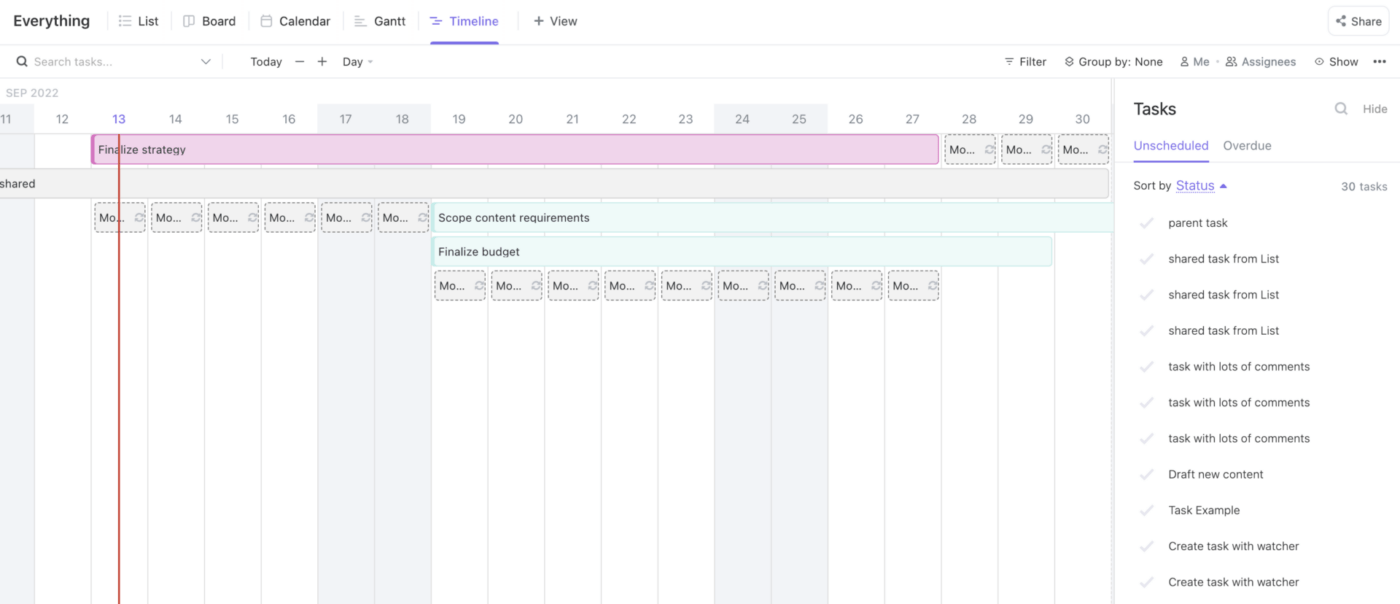
The control process involves taking those insights and turning them into action items and making changes to ensure it runs smoothly. In a dream world, every project would go according to plan. The reality is that most projects will have hiccups along the way:
- A team member may have a family emergency that pulls them away from the job
- Costs might exceed expectations due to supply chain issues
- Scope creep can increase deliverables from your project and slow down the project timeline for your project managers
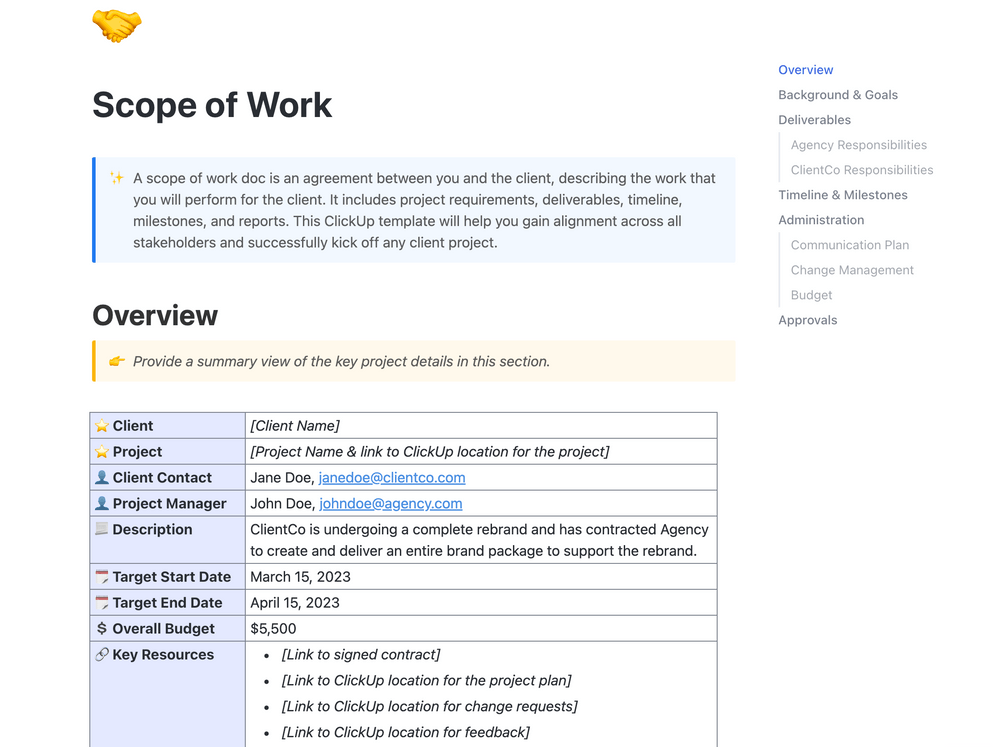
Whatever the issue, monitoring your project gives you time to react to any potential risks. If things go haywire, the data you’ve gathered in this stage is invaluable for streamlining future efforts and improving your processes. 💪
Summarize this article with AI ClickUp Brain not only saves you precious time by instantly summarizing articles, it also leverages AI to connect your tasks, docs, people, and more, streamlining your workflow like never before. Summarize article
Summarize this article for me pleaseImportance of Project Monitoring for Your Team
Project monitoring is critical to the success of any project. One of the main reasons projects fail is a lack of evaluation or oversight. If you can’t anticipate potential problems or see issues as they arise, you’re not able to take corrective action quickly enough to keep the project on track. Your project managers have to be on top of this or you risk project failures, delays, and project budget overruns.

Monitoring your team helps you stay on budget, on schedule, and on track. It also gives project managers insights into different team members’ workloads and can inform the success of future projects and the initial planning phase. With effective monitoring, you see what works well and what needs to be improved. Then you have the control to make changes and adjust so that the project continues as smoothly as possible. 🛠️
Summarize this article with AI ClickUp Brain not only saves you precious time by instantly summarizing articles, it also leverages AI to connect your tasks, docs, people, and more, streamlining your workflow like never before. Summarize article
Summarize this article for me pleaseHow to Create a Project Monitoring and Control Plan
From the planning phase of the project to execution, it’s important to have a monitoring and control plan in place to keep things on track. By doing this from the beginning, you’ll save yourself headaches and have a higher chance of pulling off a successful project. One easy way to get started is to use a template like ClickUp’s Project Monitoring and Control Plan. It features custom fields and quick links to project essentials, including work breakdown structures, the project plan, and team information.
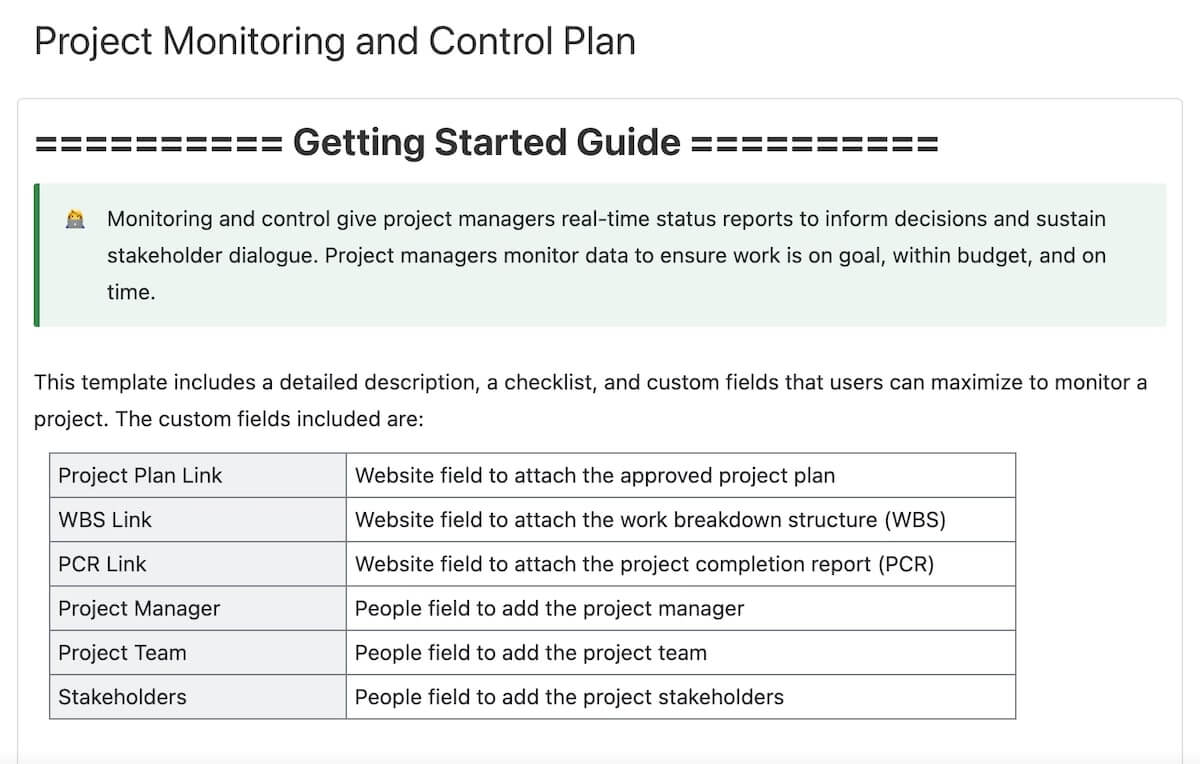
Whether you choose to use a template or not, there are several steps that are key to creating a successful monitoring and control plan. Read on for a step-by-step guide to drafting your own plans in minutes. 👀
1. Create a plan
For a successful project monitoring process, you need to have a roadmap or plan of how to achieve your project deliverables. Your project management plan should include steps for monitoring, evaluating, and controlling the project. That means having insight into the overall project as well as individual tasks and a way to identify potential issues.
Use project controls to create a plan specific to your goals. Here are a few things to address at this stage of the monitoring and controlling process.
Create a framework to manage, organize, and oversee all of your related tasks
You need a hub where you can track all of the individual tasks and related data for the project. With project management tools like ClickUp, you can easily see who is working on what, when tasks are due, and access SOPs all in one place. During this stage, you should address resource management, project scope, deliverables, and project costs. Essentially, you should plan out the project from start to finish, paying close attention to any areas where issues may arise.
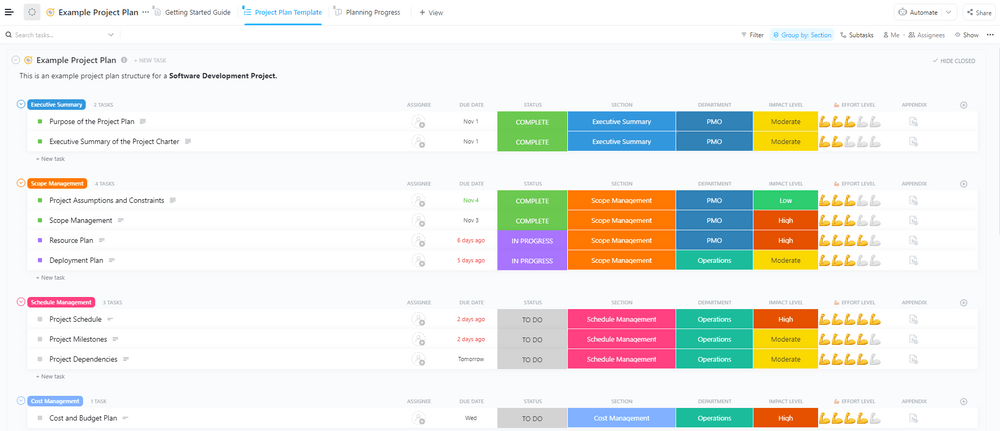
Use the ClickUp Example Project Plan Template to take the guesswork out of your project planning with an easy-to-use, all-inclusive template. Gain confidence and ensure your project stays on track from inception to completion.
Assign responsibility so everyone knows their responsibilities
Whether you’re managing a large project across departments or working with a smaller team, you’ll want to assign responsibilities. Identify who is in charge of what and how they are expected to report back on the project status. Assigning projects can be a tricky balance of over-notifying team members and a lack of communication about their responsibilities. Project managers can take advantage of features that allow them to assign comments on tasks so team members know when something is waiting on them.
Create evaluation criteria to understand how your team will succeed
- How often will you evaluate? Will it be once a week or once a month?
- How will you gather feedback?
- What is the process for change requests?
- What types of reporting will you need to evaluate the project’s progress?
2. Divvy up the work
Once you have a plan for the project, it’s time to start assigning tasks and subtasks to project team members. You’ll want to set due dates and expectations for each step in the project.
Stay organized by grouping tasks by phase or department depending on how you’re running the project. Here’s how teams use ClickUp dashboards to stay organized and assign project tasks:
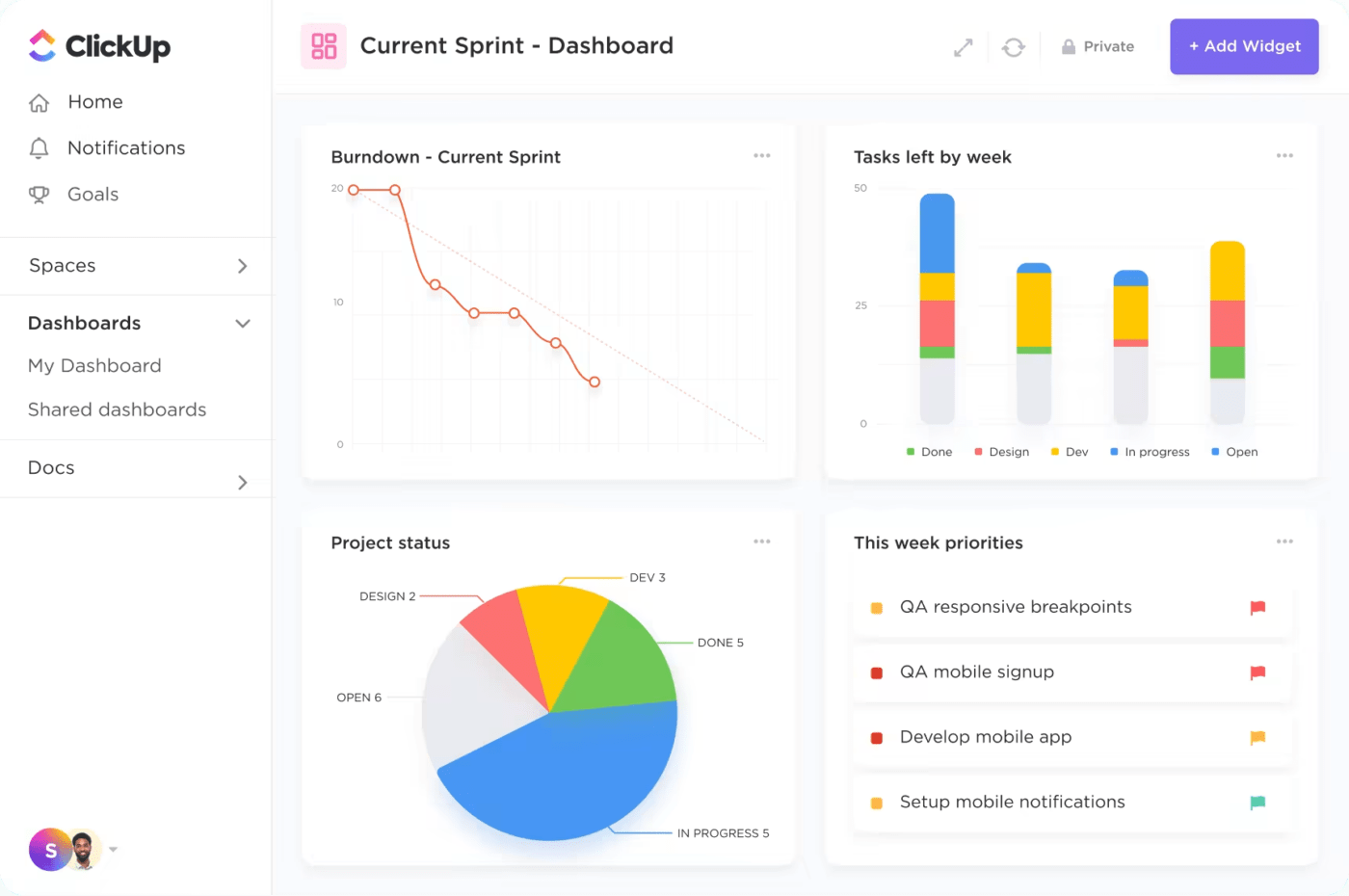
ClickUp’s Dashboards offer an easy way to build a control center with all of your project tasks. Create custom charts to get a visual overview of weekly tasks or various phases of the project.
The progress tracking feature identifies bottlenecks, and the Workload view enables employee monitoring—including insight into employees’ bandwidth so you can evaluate and adjust as needed.
Within ClickUp Dashboards, there are Gantt charts to easily see the project timeline, what’s on track, and what’s falling through the cracks. Use these to monitor how long it takes to complete tasks and get a quick look at task dependencies.
3. Track KPIs and monitor project performance
Real-time monitoring is key to project success. Use reporting tools like key performance indicators (KPIs), status reports, and performance reports to keep an eye on the progress of the project. Not only do these reports highlight success, they’re often the first place you’ll see issues pop up in project work.
By monitoring the project, you can identify variances and deviations from the baseline and conduct quality control. If something looks off, you can take a closer look and develop a list of action items to right the ship.
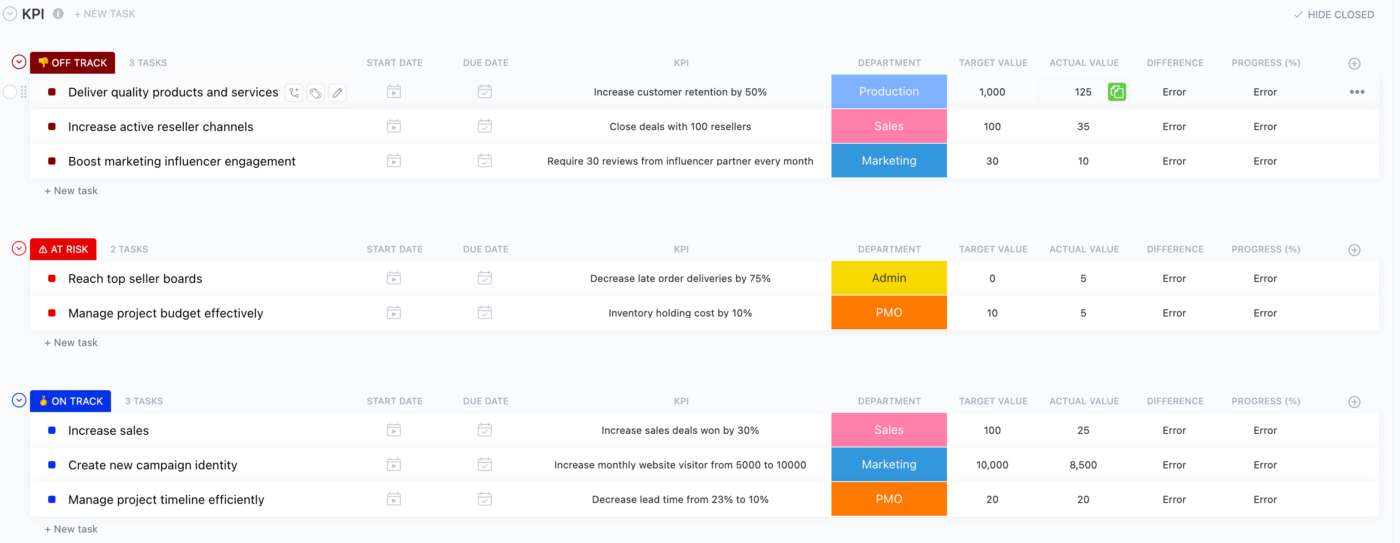
ClickUp’s KPI Template makes it easy to identify and track key metrics for your project. With four different views, you can get a quick overview of performance or dive deeper into the nitty-gritty details of what’s working and what needs more adjustment.
Use the Summary List view to group tasks by status. This gives you insight into what’s off-track, what’s at risk, what’s completed, and what’s in progress. Switch to the Departmental view to break down tasks by departments.
Hop into the Progress Board for a high-level view of potential issues and tasks that are at risk. From here, you can make a list of things to check into and make adjustments to get things on track again.
Finally, the Timeline view plots all tasks on a calendar based on their start and due dates, making it a great option for monitoring the project schedule. 🗓️
4. Improve workflows
During the monitoring phase, it’s likely you’ll find issues. That’s just the nature of project management. The control phase is where you can take insights gained from evaluations and make changes so the rest of the project continues smoothly or future projects are more successful.
Was your project delayed? Use the analytics you gathered to find out why. Maybe you could have managed workloads better. Perhaps there was a better way to solve a resource issue on time-consuming or repetitive tasks.
That’s why ClickUp Automations in your project management tool is crucial to improving workflows—you cut the unnecessary manual work to spend time on what’s most important. Project managers often juggle a ton of workflows and automations allowing them to focus on the monitoring and control process to successfully work through every phase of the project’s lifecycle.
Whatever the problem, spend some time figuring out what went wrong, how it was addressed, and what other actions you could have implemented. Going through this process makes you a better and more successful project manager and helps you build better workflows for future work. 🌻
Summarize this article with AI ClickUp Brain not only saves you precious time by instantly summarizing articles, it also leverages AI to connect your tasks, docs, people, and more, streamlining your workflow like never before. Summarize article